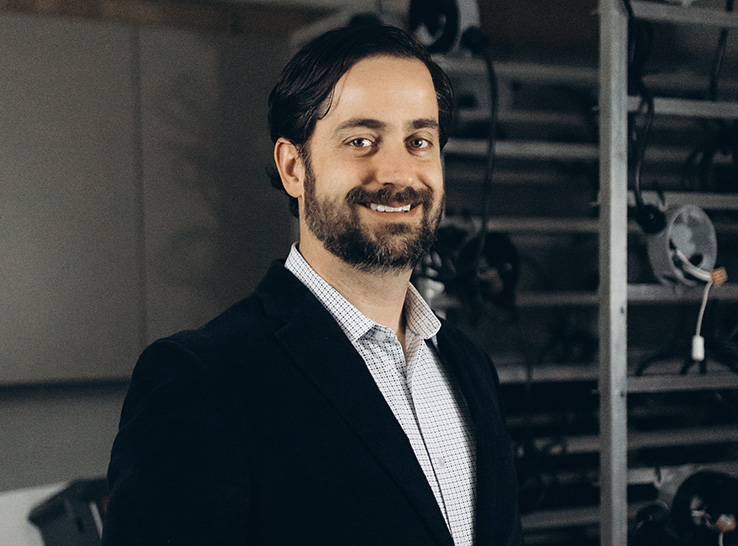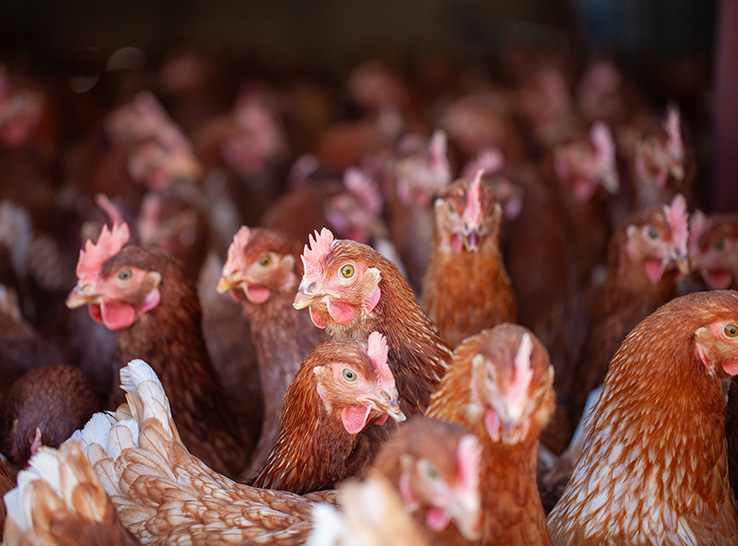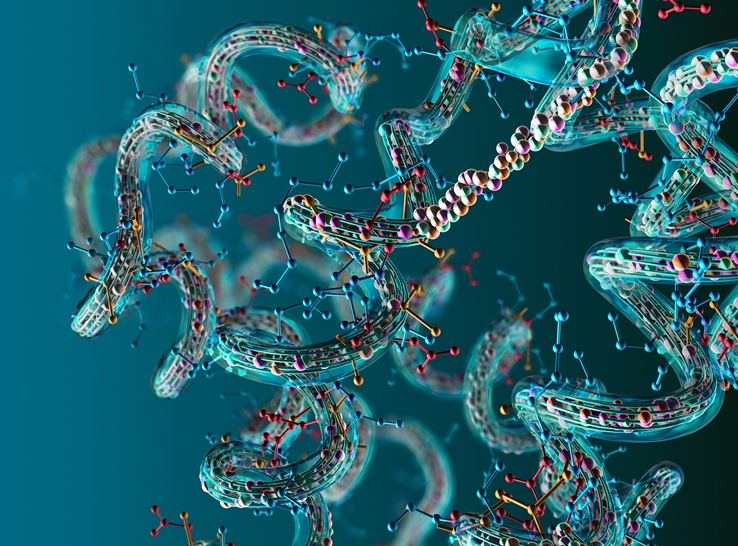By Aaron Stephan, PhD
Research and Innovation Director
ONCE by Signify
With the current outbreak of highly pathogenic avian influenza (HPAI), biosecurity measures have become a top priority for poultry farms. Diseases can be transmitted through various means, such as air entering through ventilation systems, contaminated feed or waste, or simply coming into contact with infected animals or objects contaminated with the contagion.
A disease outbreak can have significant financial impacts on poultry farms, particularly those with high numbers of animals on-site or long-lived or high-value animals.
For example, egg farms tend to have a high number of birds in a single complex, upwards of 500,000 to 1 million or more at a single site. Breeder farms house high-value animals, so biosecurity measures tend to be high, which are elevated greatly for grandparent, great-grandparent and pedigree stocks.
To combat these risks, farm complexes usually use a “Danish entry” system with defined areas separating dirty or “street” sides and clean or biosecure sides. Every individual entering the facility needs to step over the line, change shoes, shower and change clothes.
Shedding light on UVC
Ultraviolet C (UVC) radiation technology is an effective tool for killing most bacteria and inactivating viruses. This high-energy, invisible light has been a long-standing technology since the Nobel Prize in Physiology or Medicine was awarded to Niels Ryberg Finsen in 1903 for discovering the germicidal effect of UVC irradiation. UVC disinfection works by disrupting chemical bonds in DNA, RNA and proteins, which are crucial for replication of bacteria and viruses.
One application of UVC disinfection on poultry farms is the use of UVC germicidal cabinets for disinfecting fomites. These cabinets are fully enclosed, and objects are placed on a shelf while UVC light is irradiated from different directions onto the object. UVC cabinets are useful for reducing the risk of disease outbreaks due to the import of disease-contaminated objects.
Many of the most recent HPAI outbreaks in poultry have been attributed to transmission from nearby dairy herds. It’s possible that people are transmitting the virus between the herd and the flock by either carrying it on themselves or on objects shared between sites. Typical objects that are disinfected by UVC germicidal cabinets include phones, tools and lunch bags. The cabinets are usually placed at the interface between the clean and dirty sides of a Danish entry system.
The effectiveness of UVC irradiation is dependent on the dose or intensity and time. The more intense the irradiation and/or the longer the exposure, the greater level of disinfection that generally occurs.
Different bacteria and viruses have different susceptibilities to the UVC irradiation, so the dose required differs by pathogen species. Thousands of studies have been published that evaluate the susceptibility of the different species and strains of every common pathogen.
One commercially available UVC cabinet, the ONCE BioShift UVC chamber, has been specifically tested against several pathogens, including Staphylococcus aureus, a common, gram-positive bacteria that causes skin infections; Pseudomonas aeruginosa, a gram-negative bacteria which can cause sepsis in immuno-compromised individuals; and human adenovirus type-5, a virus that causes respiratory tract infections. It has also been tested against porcine reproductive and respiratory syndrome virus and porcine epidemic diarrhea virus, which are swine pathogens. The UVC germicidal cabinet reduced the viability of all these pathogens by more than 99.99% in a 5-minute exposure.
While UVC technology is effective at killing bacteria and viruses, it’s also capable of causing damage to DNA in people. Therefore, safety measures should be taken when using UVC technology.
Other applications in poultry
There may be other applications for UVC in poultry farm facilities, including disinfection of air in the ventilation system and disinfection of larger spaces where or when people or animals are not occupying the space.
Signify has a consortium of experts that works on projects on a case-by-case basis — including, for instance, upper-air disinfection for horse stables and office spaces — but so far there is no specific product for the agricultural space. Besides, UVC is most effective on already-clean surfaces, so the large organic soil load present in most barns would render the UVC irradiation ineffective.
One new application where UVC is being utilized is for surface disinfection of hatching eggs. Bacteria on the surface of an egg can hinder the ability of an egg to hatch and can reduce the viability of a newly hatched chick. Using this UVC disinfection of eggs, our customers have seen improvements in the hatching of viable, healthy chicks.
Essential biosecurity tool
In conclusion, UVC technology has become an essential tool in the fight against biosecurity risks on poultry farms. Diseases can be transmitted through various means, and UVC technology can disinfect fomites and reduce the risk of disease outbreaks. UVC technology has been tested against several pathogens, including swine pathogens and viruses that cause respiratory tract infections and skin infections. However, the effectiveness of UVC irradiation is dependent on the dose and the type of pathogen, which requires careful consideration when applying the technology.
While UVC technology is effective, safety measures should be taken when using it. By incorporating UVC technology into biosecurity measures, poultry farms can take a proactive approach to prevent disease outbreaks and protect their animals, employees and consumers.







